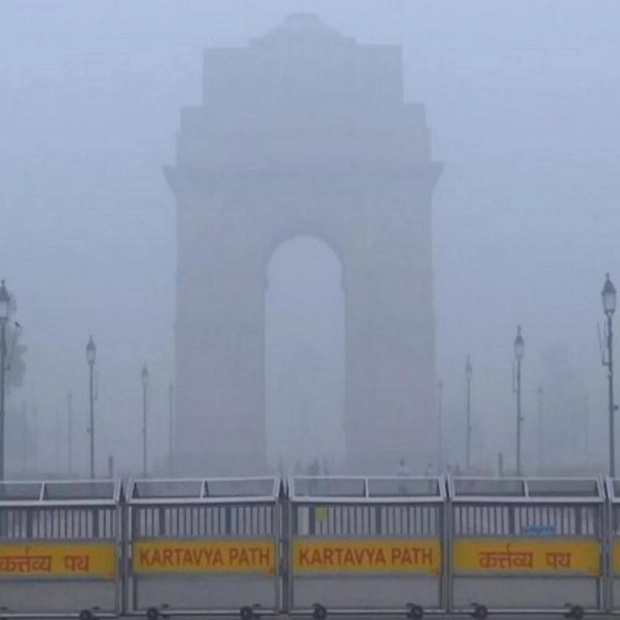People walk with umbrellas as rain falls outside the venue of the Shanghai Masters tennis tournament in Shanghai earlier this month. AFP
For a third consecutive day, extreme rainfall battered the southern Chinese province of Hainan, known as China's 'Hawaii', as another tropical cyclone passed through. This left the island partially submerged in what has been a year of record-breaking wet weather. Cities in Hainan, such as Sanya, famous for its palm trees, seafront hotels, and sandy beaches, remained flooded on Tuesday due to Tropical Storm Trami to the south. On Monday, Sanya recorded 294.9mm of rainfall over a 24-hour period, the highest for any day in October since 2000. Trami made landfall in central Vietnam on Sunday after a slow journey across the South China Sea from the Philippines, where it left at least 125 people dead and 28 missing. Although Hainan did not experience a direct hit from Trami, Chinese authorities took no risks, recalling all fishing vessels and evacuating over 50,000 people.
China's entire eastern coastline has faced extreme weather events this year, from the violent passage of Super Typhoon Yagi across Hainan in September to the strongest tropical cyclone to hit Shanghai since 1949. Scientists warn that more intense weather is on the horizon, driven by climate change. 'In October, the national average precipitation was 6.3% higher than the same period in previous years,' said Jia Xiaolong, a senior official at the National Climate Centre, during a news conference on Tuesday. Last week, the water along China's Bohai Sea rose up to 160 cm in a matter of hours despite the absence of any wind, leading to a tidal surge that flooded the streets of Tianjin and many cities in the northern provinces of Hebei and Liaoning. 'It's hard to imagine how much power was needed to push such a large area of sea water to one place,' Fu Cifu, an official at the National Marine Environmental Forecasting Centre, told state-run Xinhua news agency at the time.
China is no stranger to floods historically, but its prevention infrastructure and emergency response planning are under increasing pressure as record rains flood populous cities, devastate crops, and disrupt local economies. Amid disaster recovery efforts this summer, authorities had to provide billions of dollars in additional funding to support reconstruction in multiple regions from the south to the northeast of China. In July, the country suffered 76.9 billion yuan ($10.8 billion) in economic losses from natural disasters, with 88% of those losses caused by heavy rain and floods from Typhoon Gaemi, the most for the month of July since 2021.
Source link: https://www.khaleejtimes.com






